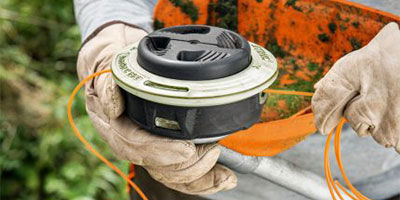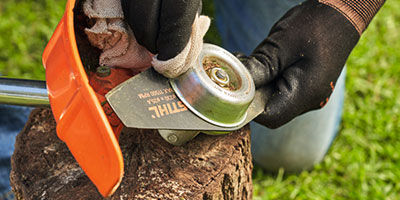How to Trim Different Vegetations and Terrains
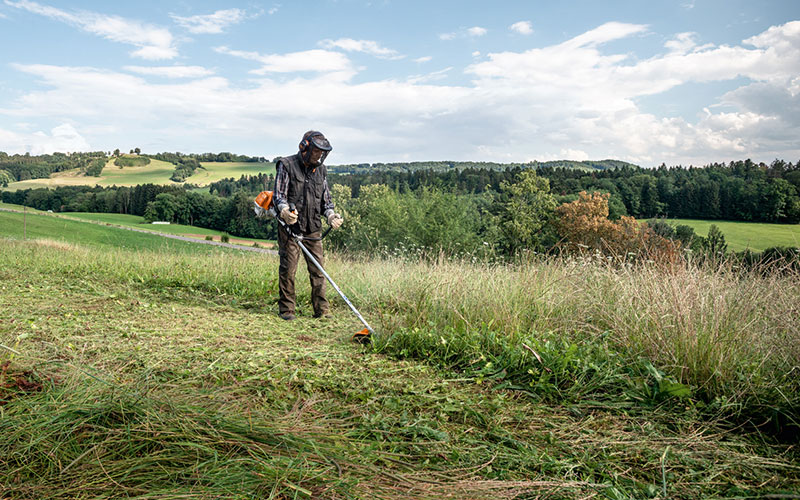
There are different ways to use your Line Trimmer or Brush Cutter and depending on the type of job, some are better than others. Using the right trimming method for the vegetation and terrain you have, will not only help you achieve better results, it will also make your work a lot easier, contributing to a healthier and more manageable garden.
This guide will equip you with effective techniques to tackle various landscapes, outlining the basic trimming techniques, and the best tips for line trimming and brush cutting:
- Long or tough grass and weed
- Large, flat areas
- On a slope
- Around obstacles
BASIC TRIMMING TECHNIQUE

Let’s start with the basics.
When using a line trimmer, understanding the direction in which the cutting attachment rotates is crucial. The cutting attachment rotates anti-clockwise, so when you trim from right to left, the trimmings will fall on the area that has been cut. With the trimmings out of your way, the rest of the job will be a lot easier. This technique ensure a smoother and more efficient outcome when you are trimming.
TRIMMING AND CUTTING LONG GRASS AND WEEDS OR ON TOUGH TERRIAN

When you are working with long grass, weeds or tough vegetation, we recommend 2 cuts.
First, cut the top of the grass from right to left. Then cut again from left to right to remove the remaining grass. The trimmings will discard to the left. This technique ensures thorough and efficient removal of tough vegetation and maintenance of a clear working area.
TRIMMING LARGE, FLAT AREAS
If you have a large and flat area to mow or trim, use the square method. Divide the area into squares, and then work along the outside edges, trimming toward the centre.
The square technique ensures comprehensive coverage of the area and allows for organised progress, making it easier to track and complete the trimming task effectively.
TRIMMING ON A SLOPE

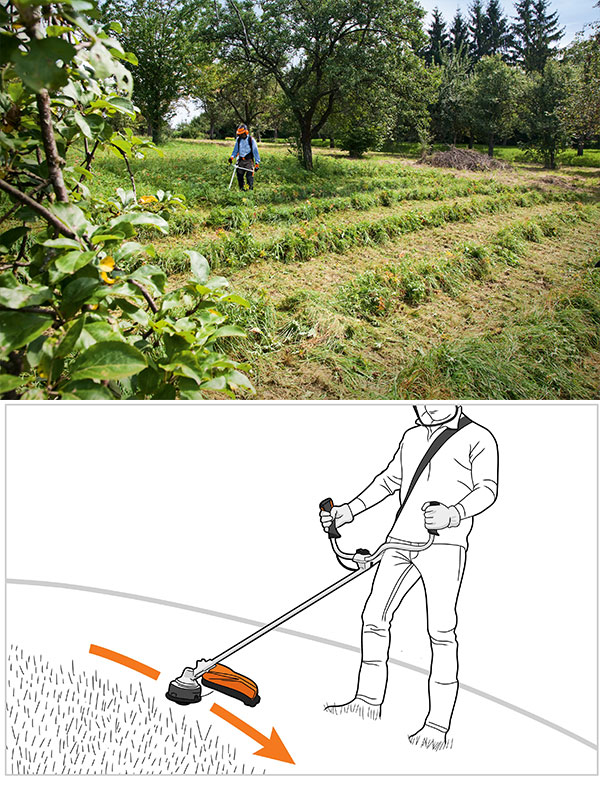
The strip method is a good way to work on a slope. Start by cutting a strip parallel to the slope. Then return along the strip and mow the next strip above and repeat. The trimmings will always fall into the area that has been cut.
The strip technique ensures stability and safety whilst trimming and cutting sloped areas, allowing for an efficient and tidy maintenance process.
TRIMMING AROUND OBSTACLES

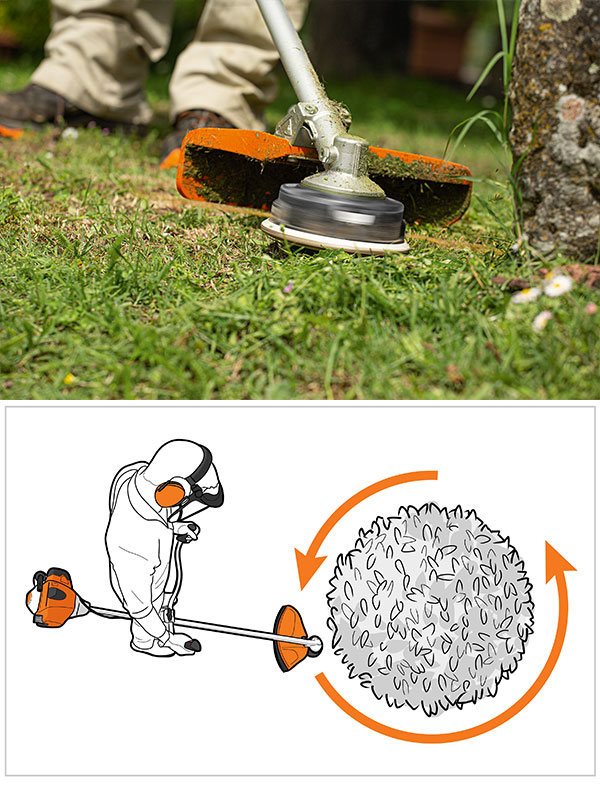
When you are trimming right up to trees or bushes use nylon line or polycut blades, a metal blade will do too much damage, if you accidently hit the trunk. Another way to protect the trunk is by placing the deflector or the spacer bracket up against it as a guide, while you move around.
When several plants are growing close together, it's best to trim around them before mowing the lawn.
This careful approach allows for precise trimming around obstacles without compromising the plants and garden area.
TRIMMING WITH THE RIGHT POSITION
In addition to using the right method, it is equally important to maintain a good working position and holding technique. This will ensure your safety and comfort during operation, making line trimming tasks easier. Learn more about using the correct safe working position here
TRIMMING WITH THE RIGHT TOOL
Choosing the right tool and cutting attachment for your line trimmer or brush cutter is essential for both effectiveness and safety. The tools and cutting attachment you need will depend on the size of your property and the density of the vegetation you are dealing with.
SUCCESSFULLY LINE TRIMMING
Whether you’re trimming large or sloped areas, or around obstacles with tough weeds, ensuring you are using the right technique and tools will allow you to get great results every time. For the best selection of line trimmers, brush cutters and expert advice, visit STIHL SHOP, your specialist outdoor equipment store.

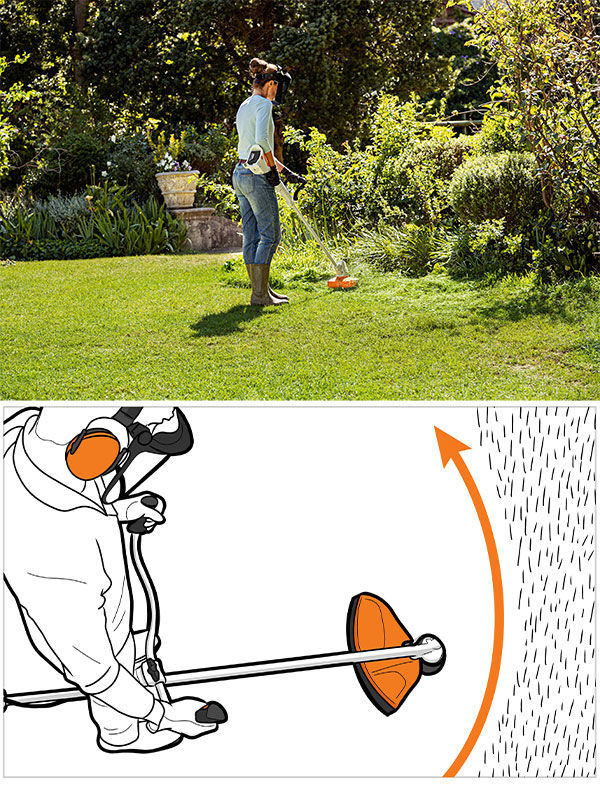
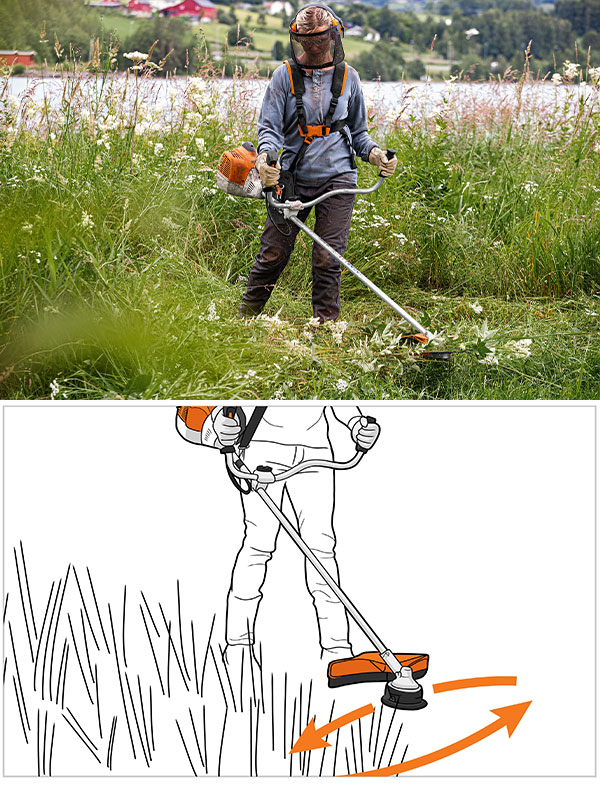
 HOW TO USE YOUR LINETRIMMER OR BRUSHCUTTER
HOW TO USE YOUR LINETRIMMER OR BRUSHCUTTER